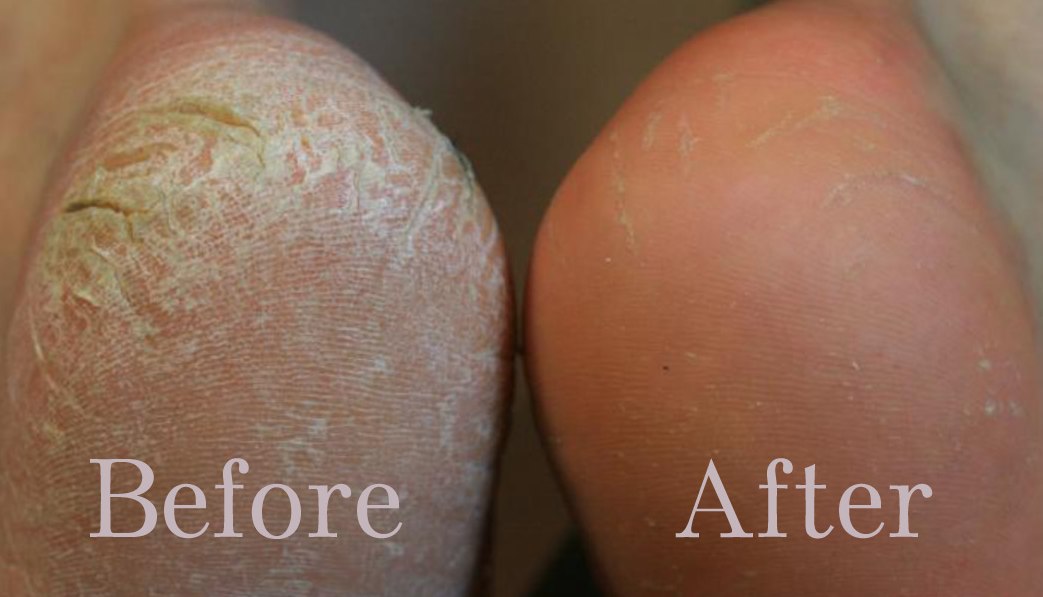Dry, cracked heels can not only be unsightly, but can often be source of pain and embarrassment. At Stirling Central Podiatry, we can help treat and resolve this problem.
What are cracked heels?
Cracked heels involve the splitting (also known as fissuring) and cracking of the skin around the boarders of your heels. This can be caused by the skin being dry or thickened with callus.
When the skin becomes dry or thickened, it loses its strength and elasticity and therefore can split under pressure, causing painful and bleeding cracks.

What causes cracked heels?
There are several reasons cracked heels can occur. Some of these include the following:
- Walking barefooted
- Walking in open footwear such as thongs or sandals
- Standing up for long hours, especially on hard floors
- Increased weight
- Dehydration
- Abnormal walking pattern (orthotics may reduce this)
- Diabetes
- Decreased blood supply to the feet (eg. Peripheral Vascular Disease – PVD)
- Psoriasis & Eczema
- Some medications (eg. Diuretics, chemotherapy…)
- Climate changes (eg. Dry summers or cold winters)
Note: In elderly or bed-/chair-ridden people, cracked or sore heels can be the sign of a pressure sore is starting to develop. These cases should be referred to the podiatrists at Stirling Central Podiatry for assessment as soon as possible.
How to treat cracked heels?
For thickened, callused heels, treatment from one of our podiatrists at Stirling Central Podiatry is the quickest and most efficient treatment available. Using special instruments, we use a simple pain-free method of debriding the callused skin and any cracks! Remember, all consultations are eligible for private health fund rebate.
For maintenance, after being treated appropriately by one of our expert podiatrists at Stirling Central Podiatry, the following is recommended:
- Use a specific heel balm, two to three times daily
- A pumice stone can be used to maintain the reduced thickness
- Wear closed-in shoes and cotton socks where possible
- Keep hydrated, drink plenty of water
- If the heel crack has split and is bleeding, use a topical antiseptic twice daily until you can come for assessment and treatment
